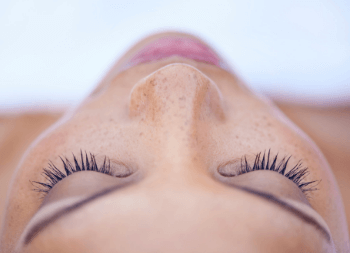Autumn weather means autumn skincare and autumn treatments, so there’s never been a better time to breathe new life into your skin. As well as increased exfoliation and richer moisturisers, you might find yourself leaning more towards an in-clinic skin treatment to better your results and health. We’re always happy to help with a tailored course of chemical peels, but why would you need a chemical peel and how do they work? We’re here to explore a chemical peel as part of your refreshed autumn look!
How a chemical peel works
A chemical is exactly what it says on the tin, only less scary. The treatment uses a peel that is formulated of different controlled acids and substances. When they make contact with the skin, these acids create a controlled wounding on the surface, exfoliating away the dead skin cells and essentially killing off the damaged. This prompts the lower layers of your skin to wake up and prepare themselves for becoming the superficial layer we’re working to slough away. Fresh skin cells are forced into production and collagen is stimulated within the skin to provide a new bounce and laxity to the developing layers. For the next few days following your peel, your blemishes will dry out and your skin will start to flake and peel (hence the name). This is your skin shedding and dying to make way for the new layer to take centre stage. We wouldn’t recommend picking at your flaking skin until its quite literally falling from your face, though, because picking before its ready irritates the virgin skin beneath and could cause irregular pigmentation! Not to mention it will also be a little sore.
How a chemical peel treats acne, enlarged pores, and blemishes
The chemical peel itself works to rebalance oil production and dry out the excess oils currently present. It dries out the oil, dead skin cells, and other debris clogging your pores and follicles to essentially press ‘reset’ on your skin. Pores become enlarged and visible after spots have stretched them out of shape, but a chemical peel not only takes off a level of skin to replace it with a new one, but it also strips the oil from these marks. This helps the pores to heal and regenerate, creating a more even complexion. Multiple treatments with chemical peels possess the ability to completely rebalance your skin’s oil production, resetting your face’s equilibrium as it adjusts to the treatments.

Chemical peel aftercare top tips
After your chemical peel its important you wear sun protection while your skin heals and adjusts. This fresh layer of skin is vulnerable to the sun because your chemical peel has (quite rightly) forced it into fruition. Wearing sun protection not only stops this skin from burning but it also protects against the development of uneven pigmentation. It’s also wise to take a break from topical makeup, unless its mineral makeup, to avoid introducing unnecessary oils to your skin once your pores have been opened and cleansed. Speaking of cleansing, too, you should switch to a lighter face wash to avoid irritating this skin for a few days. A light moisturiser might be beneficial too, but nothing too heavy.
Booking a Chemical Peel at our Inverness Skin Clinic
A chemical peel, or a course of them, during the autumn months ensures the continuation of your skin’s health during the cooler, windier months. Whether you are seeking a fresh-faced glow, to soften the signs of ageing, or tackling acne and congested skin, a chemical peel is the treatment you’re seeking. Enquire online or speak to a member of our team on 01463 830149 to book your skin health consultation today!


